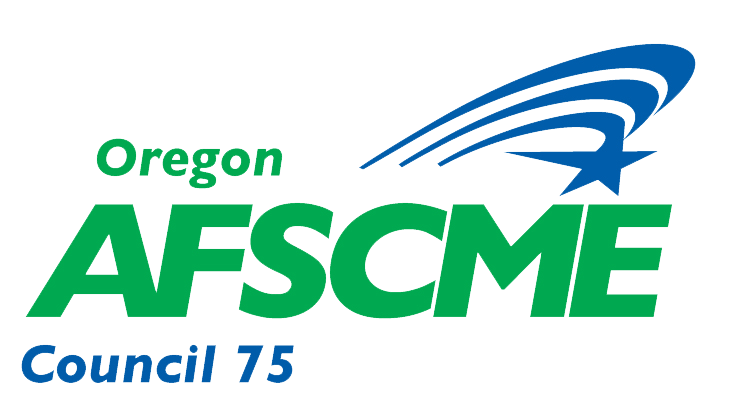Today, Oregon AFSCME Executive Director Stacy Chamberlain testified on behalf of Oregon’s 2,104 family- and home-based child care providers, and Oregon AFSCME 33,000 represented Oregon workers in the House Interim Committee on Early Childhood.
“I’m here to speak on behalf of the child care providers we’ve lost through the unprecedented toll of the pandemic and the thousands who struggle to remain open.
But I am also here on behalf of Oregon AFSCME’s other workers: our Oregon State Hospital workers, our correctional workers, members at OHSU, and other workers who are in desperate need of care outside of the traditional 9-to-5 schedule; those in need of hard-to-find infant and toddler care; or those who seek culturally-specific child care. I hear from our members every single day about their struggle to find ANY available child care” said Chamberlain.
In-home and family-based child care providers represent a little more than a quarter of all the child care capacity across Oregon. For culturally-specific care, non-traditional hour care, care in rural communities, as well as infant and toddler care — that percentage is much higher, explained Chamberlain.
“Our preschool promise providers, and those who provide care for families who receive the state subsidy or ERDC dollars, continuously face extreme financial hardship that has only been exacerbated by the pandemic. When asked what they needed to stay open or reopen, 55% of child care directors said increased funding” continued Chamberlain.
In the Spring of 2021, the Partnership for Preschool Improvement Project — a collaboration between Portland State University, Oregon State University, ELD, and researchers from OSLC Developments — released a study that has been critical to our understanding of child care needs across the state. Researchers asked providers what the major barriers to child care were, and our providers answered loud and clear: it comes down to money.
Of the 3,035 respondents, 881 identified themselves as “directors” with 64% of directors operating in-home or family-based.
The vast majority of these child care directors are women (over 87%), and many of them are women of color, multiracial women and multilingual women, and women who are monolingual in a language other than English. These women are essential entrepreneurs, and lifting them up invigorates all workers and communities connected to their essential services.
Some takeaways from the survey include:
43.8% of family- or home-based providers had staff quit since the start of the pandemic
50% had to reduce staff hours
27.5% of all providers had to close temporarily due to the COVID19 pandemic
5% had to close permanently
Chamberlain continued, “while we appreciate the over $200 million in stabilization grant money, it isn’t nearly enough. Our workers need immediate, sweeping support to recover from the pandemic and to help Oregon families receive the care they need. We are optimistic that Congress can pass the Build Back Better Plan, which would send an astounding $4 billion in child care investments to Oregon.”
Executive Director Chamberlain outlined several critical first steps the state must take to protect these vital providers.
Increase Rates for Providers. Many child care directors can only afford to pay their workers minimum wage. Many others are struggling to keep their business open at all. Financial barriers are the first step that we cannot overlook when addressing the child care crisis.
Build Critical Supply. Getting the families the care they need means having enough providers with capacity. We need to invest in community-based organizations and culturally-specific organizations to immediately recruit and train new providers, to help build supply and meet the demand. We also need to invest in our existing providers, offering them the financial support needed so they can expand and build additional capacity.
One-Time Start-Up and Expansion Grants. Financial barriers were sited over and over again by directors and owners as the number-one issue to address to build and maintain supply. Creating expansion and capacity-building grants for our current providers, as well as one-time start up grants for new providers, would go a long way in providing bold, sweeping investments to address these barriers. Although the current stabilization grants have been essential for so many providers, they cannot be used for major renovations or start-up costs. One-time expansion and start-up grants are needed to address this issue.
Focus on the Decisions Ahead. With the federal dollars on their way, Oregon is going to have to lean into this work over the next two years. The Legislature will have to make significant policy choices about how to navigate this new federal child care investment. Right now, we’re not ready. We need legislative leadership from the House and the Senate to help us navigate these major transformations and ensure that there is a specific focus on getting families what they need: culturally-specific, safe and flexible child care in their communities.
“These are our big asks around child care for 2022” said Chamberlain.
“And while we think about how to make these massive investments over the next few years, it's essential that we focus on equity. Black and Brown Oregonians and rural Oregonians especially do not have access to the care they need. These are the families our child care providers represent, and these are the families and children that will transform our future. It’s time to make an investment in them now — one that will have positive impacts for decades to come.”
